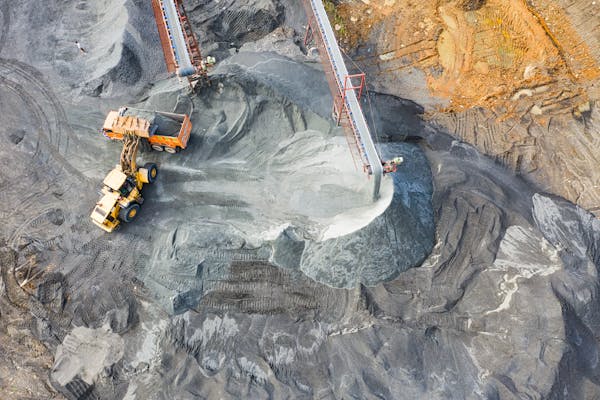Coal production has been under scrutiny and now the state’s budget could be affected by it as early as next year. With fewer dollars in the state’s coffers, teaching jobs and state highway jobs could be cut, according to legislators who keep an eye on the fiscal matters.
Coal mining jobs could also be axed.
The problems stem from this year’s warmer winter to heavy regulations from the federal government for coal-powered energy.
Recently, Wyoming governor Mark Gordon promised to sue the federal government over new rules that aim to put the coal industry on ice.
The US Environmental Protection Agency issued four “final” rules, as they’re called, that mandate that existing coal-fired power plants cut or capture 90% of their planet-warming carbon dioxide emissions by 2032 or convert to natural gas or shutter their plants altogether.
Other rules set timelines for significant cuts to smokestack emissions of mercury and other toxic metals, polluted wastewater from coal power plants and more stringent standards for coal ash disposal.
The Biden Administration says that’ll cut back on “human-caused climate change.”
“It is clear the only goal envisioned by these rules released by the Environmental Protection Agency today is the end of coal communities in Wyoming,” Gordon said in a prepared statement. “EPA has weaponized the fear of climate change into a crushing set of rules that will result in an unreliable electric grid, unaffordable electricity and thousands of lost jobs.”
The Wyoming Mining Association also discounted climate change as an excuse to attack the coal industry.
“Wyoming is once again the sacrificial lamb on the altar of the climate change cult,” the association’s Executive Director Travis Deti said.
Wyoming remains the nation’s largest coal producer, although production has plummeted by nearly half since 2008, with companies shipping some 237 million tons in 2023, according to the Wyoming State Geological Survey. More than 90% of coal mined in the state is sold to power plants in the U.S., which is why it’s often referred to as “thermal coal” — unlike “metallurgic coal” that is sold to steel manufacturers.
Coal mining contributed some $650 million in taxes, royalties and fees to the state in 2019 and employed more than 5,000 workers, according to the Wyoming Mining Association.
The vast majority of coal mining occurs in the Powder River Basin in the northeast corner of the state, while several communities host nearby coal-fired power plants: Gillette, Glenrock, Wheatland, Kemmerer and Rock Springs.
In addition to the federal government taking aim at coal production, a warmer than normal winter and significant coal production drops raised eyebrows within government budget circles.
The Wyoming State Geological Survey released data April 29 showing 2024 first quarter coal production plummeting nearly 21% from the first quarter of 2023, when the state dug up 58 million tons of coal.
A few days beforehand on April 25, news broke with an announcement by Arch Energy Resources Inc. showing that it had bled red ink in the first quarter, and that layoffs are possible at Wyoming coal mines.
The St. Louis-based company said performance at its Powder River Basin mines fell short of expectations as thermal coal demands dipped due to competitive pressures from cheap natural gas and stockpiling of coal by utilities after a mild winter.
And more recently on Thursday, St. Louis-based Peabody Energy Corp., which runs the world’s most productive coal mine in northeastern Wyoming, saw its profit slip 79% from a year ago as production in the region’s surface mining operations sunk to one of its lowest levels in a decade.
“If one extrapolates out the first 17 weeks of federal data on coal production (in 2024), the annual total Wyoming coal production is on pace for approximately 191 million tons, substantially lower than the 225 million tons forecast,” according to Don Richards, co-chairman of the Wyoming Legislative Service Office in Cheyenne, and who heads up the Consensus Revenue Estimating Group (CREG).
“A miss of 34 million tons of lower coal production translates to just over $50 million per fiscal year for spending (nonpermanent) state accounts (General Fund, Budget Reserve Account and School Foundation Program),” he said.
Wyoming’s budget may see an estimated $50 million shortfall in revenue collection from severance taxes and federal mineral royalties from the state’s coal operators as it moves into calendar year 2025.
Severance taxes are paid to Wyoming when a mineral is removed from the ground, while federal mineral royalty revenues represent a portion of the Cowboy State’s revenues with the U.S. Treasury getting the rest.
The gloomy budgetary outlook was provided to Cowboy State Daily by Richards in an email Friday responding to several questions submitted to the influential budget planner.
CREG is made up of nine financial experts who come up with estimates on the state’s budget for lawmakers to use as a roadmap on how to draft spending bills.
For sure, a shortfall of $50 million in revenue will hit everything from the state’s general fund, used to run arms of government like transportation, environmental regulation and general services.
Also, the Wyoming School Foundation Program, which provides a guaranteed level of funding to every Wyoming public school district, could face tight fiscal times.
The budget reserve account, or sometimes referred to as a rainy day fund, is where surplus severance taxes and federal mineral royalties can get redirected on an as-needed basis for appropriation at a later date.
Those cash pockets are only so deep.
Richards said that the April 2024 revenue update, also part of the state’s CREG continuous budget planning process, found that the current fiscal year that ends June 30 is “ahead of pace” on revenue collections from severance taxes and federal mineral royalties.
“As noted in the report, revenue collections between now and the end of the fiscal year (June 30) are reasonably expected to decline – attributable to lower than forecast natural gas prices and lower than forecast coal production,” he wrote to Cowboy State Daily.
“It is likely that the reductions will reduce (possibly eliminate) the excess revenues currently apparent from these revenue streams,” he said. “However, oil prices and oil production continue to be somewhat ahead of the CREG forecast.”










